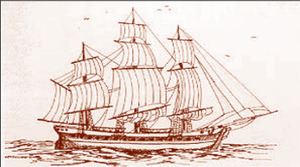Commissioned 1830 Fate auctioned 1841 Weight 0.0635 tons | Namesake Colo Colo Decommissioned 1841 Displacement 140 | |
 | ||
At the end of the Chilean Civil War of 1829–1830 the government decided to buy the brigantine-schooner Flora to confront a new attack of insurgents. She was renamed Colo Colo.
Contents
She brought Claudio Gay to the Juan Fernández Islands and realiyed hydrographic survey at the coasts of Chile.
War of the Confederation
In August 1836 the Chilean insurgent Ramón Freire, with the support of the government of the Peru–Bolivian Confederation, sailed bound for Chiloé to promote a revolution in Chile but he was betrayed and captured. The Chilean government sent the Colo Colo and the Aquiles under command of Pedro Angulo bound for El Callao in order to retaliate the Peruvian attempt to intervene in the Chilean affairs. The Colo Colo remained in Arica and the Aquiles continued to Lima and captured the schooner Peruviana, brigantine Arequipeño and the barque Santa Cruz in El Callao so easily and quietly that the local authorities did not realize until next morning that the Aquiles set sailed away carrying with her the Confederation's navy.
Voyage to Easter Island and Australia in 1837
On 8 March 1837, under the command of Teniente de Marina Leoncio Señoret, the Colo Colo sailed off from Valparaíso bound for Juan Fernández Islands, where she brought aboard the jailed leaders of the opposition to be banned in Australia. Thus, the Colo Colo was the first Chilean ship to visit the Easter Island.
On 14 November 1837, a naval Confederation force tried to liberate Ramón Freire from Juan Fernández Islands.
